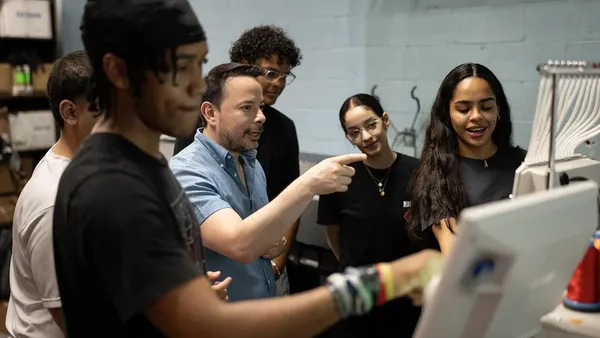Dive Brief:
- Teaching in Bogota, Colombia in 2007, Sara Potler LaHayne saw students dancing in the courtyard between classes, and was struck that through movement, they “were able to safely express their emotions, relate to one another and build empathy,” the founder and CEO of Move This World wrote in The Hechinger Report.
- LaHayne believes that movement can help students not just express their own emotions, but also learn how to connect and communicate to others.
- Students who are able to express their feelings, to give a name and voice to their emotions rather than keep them bottled up inside, can learn how to manage these emotions rather than react to them. In turn, they also learn to empathize with their peers, recognizing an emotion that they have experienced themselves, and then reach out to help.
Dive Insight:
The connection between the arts and social emotional learning (SEL) is strong. Lest educators think the arts are limited to museum field trips and listening to classical music, even parents singing to their children can impact a child’s emotional well-being.
That’s what the National Endowment for the Arts found when it examined 18 studies for its 2015 report, “The Arts in Early Childhood: Social and Emotional Benefits of Arts Participation.” Those bedtime lullabies, as it turns out, weren’t just helpful in getting toddlers to sleep.
Parents who sang to their children at least three times during the week ended up with children who had “strong and sophisticated social skills,” noted the report, citing parents who self-reported. Even before school starts, exposure to music and movement led to children displaying more independence, social cooperation and more attachment abilities than children who did not have these experiences.
Dance also played a strong role in social and emotional skills. Children who met twice a week in a dance program for eight weeks, “showed strong reductions in internalizing (shy, anxious behavior) and externalizing (aggressive behavior) problems,” noted the report.
An arts education that’s well-rounded is a wonderful addition to any curriculum. While a cultural boon for students, it also may help them develop SEL skills that they can take with them long after their classroom lessons are over.











